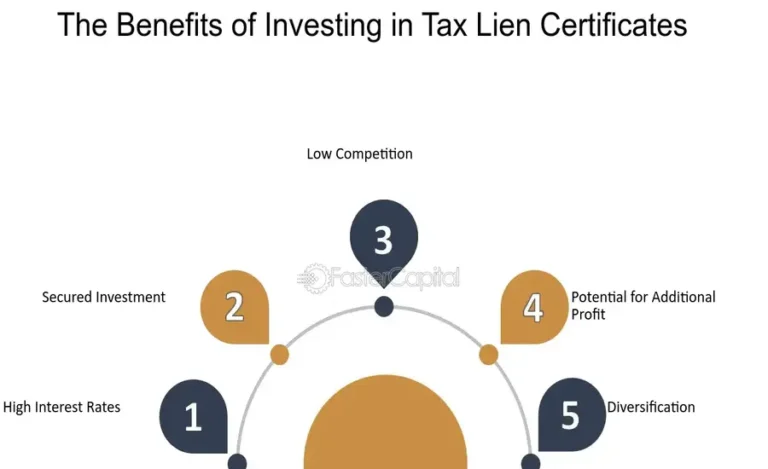Enterprise Application Development with Flutter: Best Practices and Tips
In the world of enterprise application development, finding the right tools and frameworks can be a game-changer. Enterprises, large or small, rely on robust, scalable, and efficient applications to meet their business needs. And that’s where Flutter comes into play. If you’ve been contemplating how to streamline your enterprise application development process, this guide will walk you through the best practices and tips for leveraging Flutter app development services.
Understanding the Rise of Flutter in Enterprise Application Development
Flutter, an open-source UI software development kit (SDK) created by Google, has gained substantial traction in recent years. It allows developers to create natively compiled applications for mobile, web, and desktop from a single codebase. This unified approach has made Flutter a go-to solution for many enterprises.
Why is Flutter becoming so popular in enterprise application development? One reason is its flexibility and efficiency. Enterprises are often pressed for time and resources. Flutter’s ability to reduce development time and cost, while still delivering high-performance applications, is invaluable. In fact, according to a 2023 survey by JetBrains, Flutter is the second most popular cross-platform framework, with 42% of developers using it to build applications.
But popularity alone isn’t enough reason to jump on the Flutter bandwagon. It’s important to understand the best practices that can help you make the most out of this powerful framework.
Best Practices for Enterprise Application Development with Flutter
Start with a Clear Strategy
Before diving into Flutter app development, it’s essential to have a well-defined strategy. This includes understanding the specific needs of your enterprise, your target audience, and the primary goals of the application. Ask yourself, what problem are you trying to solve? How will this application integrate with your existing systems?
A clear strategy will guide the entire development process, from design to deployment, and ensure that the final product aligns with your business objectives.
Prioritize User Experience (UX)
In enterprise application development, user experience is paramount. A poorly designed app can lead to frustration, reduced productivity, and ultimately, a loss of revenue. Flutter excels in providing a rich and seamless UX, thanks to its vast collection of widgets and its ability to deliver high-performance applications.
When developing with Flutter, focus on creating an intuitive and user-friendly interface. Conduct user testing regularly and gather feedback to ensure that the application meets the needs of your end-users. Remember, a satisfied user is more likely to adopt and continue using the application.
Leverage Flutter’s Hot Reload for Agile Development
One of the standout features of Flutter is its “hot reload” capability. This feature allows developers to see the effects of code changes in real-time without restarting the entire application. This can significantly speed up the development process and make it easier to experiment with different UI elements or functionality.
In the context of enterprise application development, where timelines are often tight, hot reload can be a game-changer. It allows your development team to work more efficiently and make quick adjustments based on user feedback or changing requirements.
Ensure Cross-Platform Compatibility
Enterprise applications often need to run on multiple platforms, including iOS, Android, web, and desktop. Flutter’s single codebase approach makes it easier to develop cross-platform applications without sacrificing performance or user experience.
However, it’s crucial to test the application thoroughly on all intended platforms. Each platform may have its nuances, and what works well on one might not work as smoothly on another. Ensure that your Flutter app development services include rigorous testing to catch any platform-specific issues early in the development process.
Adopt a Modular Architecture
Modular architecture is a best practice that can make your Flutter app more scalable and maintainable. By breaking down your application into smaller, independent modules, you can manage complexity more effectively. Each module can be developed, tested, and deployed independently, making it easier to update or replace specific parts of the application without affecting the whole system.
In enterprise application development, where applications are often large and complex, a modular approach can save time and reduce the risk of introducing bugs when making changes.
Focus on Performance Optimization
Performance is a critical factor in enterprise applications. Slow or unresponsive apps can lead to decreased productivity and user dissatisfaction. Fortunately, Flutter is designed with performance in mind. Its ahead-of-time (AOT) compilation, efficient rendering engine, and optimized widgets contribute to fast and smooth applications.
To ensure optimal performance, follow best practices such as minimizing widget rebuilds, using efficient data structures, and avoiding unnecessary computations in the UI thread. Additionally, tools like Flutter’s DevTools can help you identify and fix performance bottlenecks.
Implement Robust Security Measures
Security is non-negotiable in enterprise application development. Sensitive data, including customer information, financial data, and intellectual property, must be protected from potential threats. Flutter provides several security features, but it’s essential to implement additional measures based on your specific requirements.
Ensure that your application follows industry-standard security practices, such as data encryption, secure authentication, and regular security audits. Consider working with Flutter app development services that have expertise in building secure enterprise applications.
Embrace Continuous Integration and Continuous Deployment (CI/CD)
CI/CD is a best practice that can streamline the development and deployment of your Flutter applications. By automating the testing and deployment process, CI/CD helps you catch bugs early, ensure code quality, and deliver updates faster.
Integrate CI/CD tools with your Flutter development pipeline to automate tasks such as building, testing, and deploying your application. This approach not only saves time but also reduces the risk of human error during the deployment process.
Leverage Flutter’s Ecosystem
Flutter’s ecosystem is rich with plugins, packages, and tools that can enhance your development process. Whether you need to integrate third-party services, add advanced features, or optimize your application, there’s likely a Flutter package that can help.
However, it’s important to choose your dependencies carefully. Rely on well-maintained and widely-used packages to reduce the risk of compatibility issues or security vulnerabilities. Regularly review and update your dependencies to ensure that your application remains secure and up-to-date.
Invest in Training and Development
Finally, one of the best investments you can make is in the training and development of your team. Flutter is a powerful framework, but it’s essential to ensure that your developers are well-versed in its best practices and latest features.
Provide opportunities for your team to attend Flutter workshops, webinars, and conferences. Encourage them to participate in the Flutter community and stay up-to-date with the latest trends and advancements in enterprise application development.
Tips for Success in Enterprise Application Development with Flutter
Now that we’ve covered the best practices, let’s dive into some additional tips that can help you succeed in your Flutter app development services:
Stay Updated with Flutter Releases
Flutter is constantly evolving, with new features, improvements, and bug fixes being released regularly. Staying updated with the latest Flutter releases ensures that your application benefits from the latest advancements and maintains compatibility with the newest devices and platforms.
Subscribe to the official Flutter blog and join the Flutter community to stay informed about the latest updates. Regularly review the release notes and consider adopting new features that can enhance your application.
Collaborate with Stakeholders
Enterprise application development is rarely a solo endeavor. It’s important to collaborate closely with stakeholders, including business leaders, end-users, and IT teams, throughout the development process.
Regular communication with stakeholders helps ensure that the application meets business objectives, aligns with user needs, and integrates seamlessly with existing systems. Involve stakeholders in the testing phase to gather valuable feedback and make necessary adjustments before the final release.
Document Your Code and Processes
In enterprise application development, documentation is crucial for maintaining code quality, facilitating onboarding, and ensuring long-term maintainability. Document your code thoroughly, including explanations of complex logic, architecture decisions, and any custom implementations.
Additionally, document your development processes, including your CI/CD pipeline, testing strategies, and security practices. Well-documented code and processes make it easier for new team members to get up to speed and contribute to the project.
Plan for Scalability
As your enterprise grows, your application will need to scale to accommodate increasing users, data, and functionality. Planning for scalability from the outset can save you significant time and resources in the long run.
Consider factors such as server capacity, database architecture, and network infrastructure when designing your application. Use scalable technologies and cloud services that can grow with your enterprise. Regularly review your application’s performance and scalability to ensure it meets the needs of your business.
Test Early and Often
Testing is a critical component of any successful enterprise application development project. Start testing early in the development process and continue testing throughout the lifecycle of the application.
Implement a combination of manual and automated testing to catch bugs, performance issues, and security vulnerabilities. Focus on testing critical workflows, integrations, and edge cases. Regular testing helps you identify and address issues before they impact your end-users.
Why Flutter App Development Services Are Essential for Enterprises
Flutter app development services offer a powerful solution for enterprises looking to build high-quality, cross-platform applications. By following best practices such as starting with a clear strategy, prioritizing user experience, and embracing CI/CD, you can maximize the potential of Flutter in your enterprise application development projects.
Additionally, staying updated with the latest Flutter releases, collaborating with stakeholders, and planning for scalability can further enhance your chances of success. Whether you’re new to Flutter or looking to optimize your existing development process, these tips and best practices will help you build robust and scalable enterprise applications.






